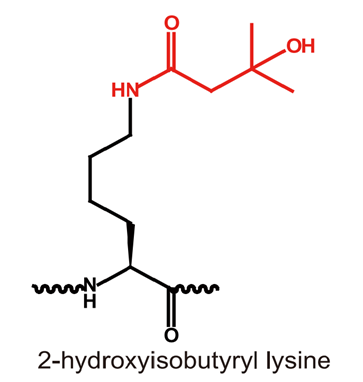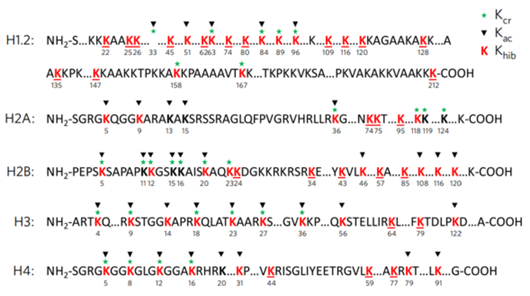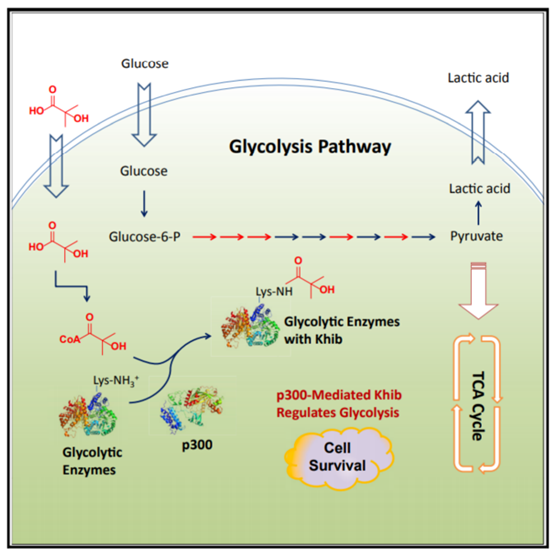Interested in our services
Contact our experts to provide further information




2-hydroxyisobutyrylation (Khib) is a post-translational modification of lysine proteins that was discovered in 2014. It is a highly abundant modification that is widely found in both prokaryotic and eukaryotic organisms.

2-hydroxyisobutyrylation (Khib) is a prevalent post-translational modification on histones and plays a crucial role in regulating germ cell differentiation. Moreover, Khib is closely associated with biological processes such as glucose metabolism, amino acid synthesis, and glycolysis. The study of Khib modification and its regulation has increasingly become a research hotspot in the fields of epigenetics and metabolic regulation.
The close association of 2-hydroxyisobutyrylation with epigenetic and glycolytic metabolic pathways suggests that this post-translational modification may be implicated in various diseases or physiological processes related to epigenetics or metabolism.
1. The probability of khib modification on lysine residues in histones is high:

2. Five of the 10 key enzymes in the glycolysis pathway contain khib sites regulated by EP300:

1. Epigenetics:
Nucleic Acids Research:Functional interplay of histone lysine 2-hydroxyisobutyrylation and acetylation in Arabidopsis under dark-induced starvation.
2. Metabolic regulation:
PNAS:2-Hydroxyisobutyrylation on histone H4K8 is regulated by glucose homeostasis in Saccharomyces cerevisiae.
3. Regulation mechanism:
Nature Chemical Biology:TmcA functions as a lysine 2-hydroxyisobutyryltransferase to regulate transcription.
Interested in our services
Contact our experts to provide further information
